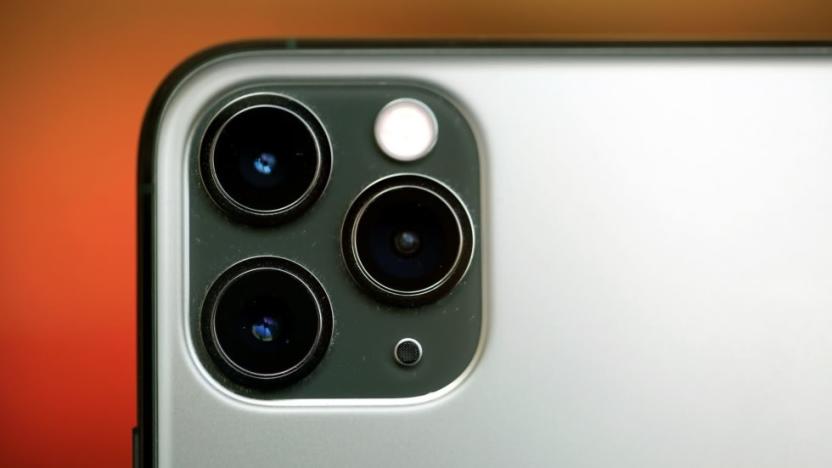3D Sensor
Latest

The next iPhone could have a depth-sensing camera on the back
The latest thing to emerge from the wheels at the rumor mill is the suggestion that the next iPhone will get a rear-facing 3D camera. According to Fast Company's sources, Apple will cram TrueDepth, the same sensors used for in the forward-facing array for FaceID, into the iPhone's primary camera setup. The tech will apparently be bought from Lumentum, the same company that currently makes the FaceID sensors.

Engadget giveaway: win an iPad mini 3 courtesy of Blast Motion!
Is that cross fit regimen working? Perhaps that batting cage practice is paying off or you're lofting those dunks better than ever. Capturing the action on video will tell part of the story, but adding stats or instant slow-mo edits can add a whole new dimension. Blast Motion is a 3D motion capture sensor that works alongside video to help analyze performance by tracing factors like vertical height, rotation, acceleration and more through a variety of custom apps depending on your sport. It plays well with iOS, so the company provided us with one of Apple's iPad mini 3 slates along with Blast Motion's Athletic Performance package so one lucky Engadget reader can start getting their stunts on film. Metrics from all your jump shots, swings, leaps and flips are ready to view in chart form to help trace your progress over time and if you're particularly impressed with yourself, it's easy to share your exploits through social media. In order to take Blast Motion's sensor and a new iPad mini 3 for a spin, all you need to do head down to the Rafflecopter widget below for up to three chances at winning. Winner: congratulations to Chris C. of Torrance, CA.

Evoluce announces 46-inch display with built-in 3D sensors
We've already seen Evoluce toy around with Kinect hacks and multitouch displays, and it's now inevitably managed to combine the two. The company has just announced its new I-Voluce display, which fuses a standard 46-inch LCD with some integrated "3D depth sensing technology" that's apparently not simply a repurposed Kinect -- exact details on it are light, but it will apparently work from a distance of up to 13 feet, and it relies on Windows 7 for an OS. That's obviously not designed for home use, but Evoluce does see plenty of potential for the displays in public spaces like museums, as well as in office and education environments. For those that prefer a more hands-on approach, Evoluce also has an updated version of its Surface-style multitouch table, the Evoluce Two, which also packs 3D depth sensing technology and can accommodate up to six users simultaneously. Of course, neither exactly come cheap -- look for prices to start at €3,995, or about $5,600.

Kinect turned into a quadrocopter radar (video)
Every night we go to bed thinking that we've finally seen the best Kinect hack done and every morning we wake up to see something even crazier concocted with Microsoft's motion controller. Today, it's been mounted atop a quadrocopter -- yes, man's future worst enemy -- and utilized essentially as a 3D radar, facilitating the bot's autonomous maneuvering around a predetermined track. The random introduction of obstacles is also handled in stride, leaving us equal parts impressed, apprehensive, and eager for more. See the video after the break. [Thanks, Glen]

Cambridge Consultants Suma sensor is designed to add '3D' input to traditional control schemes
They're short on details, but the folks at Cambridge Consultants might just be onto something with this new "Suma sensor system" of theirs. Basically it translates the deformation of its soft material into 3D data that can be used in a video game to "unleash the full capabilities of both the human hand and the user's imagination." Sounds a tad far fetched, but the exciting part is that this "Suma skin" control material can replace the traditional casing of a regular gaming controller for less than a buck in parts, meaning that with (relatively) little effort we could see tactile squeezing, gripping and other sorts of finger-friendly input worked into console gaming without having to bid farewell to the form factors we know and love. Cambridge Consultants doesn't mention robotics, but we could also see this sort of material being quite the cost-effective, sensor-laden skin replacement. Just as long as nobody tries to get us to control Ezio with that little stress-ball pictured above.



